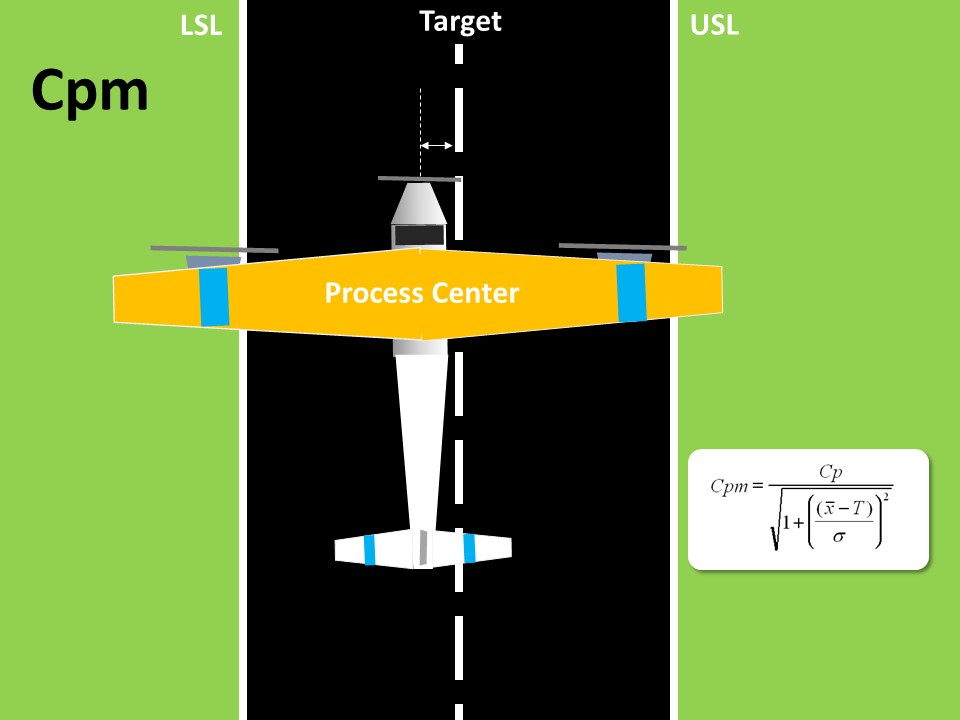A scatter plot is a Six Sigma tool that visually displays the relationship between two variables. Each point on the plot represents a pair of values, with one variable on the x-axis and the other on the y-axis. By analyzing the pattern of points, you can identify correlations, trends, and potential causative relationships. Scatter plots help detect outliers, understand data distribution, and evaluate the strength and direction of relationships. They are instrumental in regression analysis and hypothesis testing, providing valuable insights for data-driven decision-making and process improvement in Six Sigma projects.
#nilakantasrinivasan-j #Lean-six-sigma #six-sigma #six-sigma-certification-course #scatter-plot #tools-of-six-sigma
Tags
Multi-Vari Analysis is a Six Sigma tool used to study the variations in a process and identify their root causes. By analyzing data across multiple dimensions—such as time, different operators, or machinery—it helps pinpoint where variations occur and their impact on process performance. This tool visualizes data in a way that makes it easier to see patterns and trends, facilitating more accurate root cause analysis. Multi-Vari Analysis supports decision-making by highlighting areas for improvement, reducing process variability, and enhancing overall quality and consistency in operations. It’s instrumental in driving continuous improvement and achieving operational excellence.
#nilakantasrinivasan-j #Lean-six-sigma #six-sigma #six-sigma-certification-course #multi-vari-analysis #tools-of-six-sigma
Tags
Probability distribution is a key Six Sigma tool used to understand the likelihood of different outcomes in a process. It shows how the probabilities of various possible outcomes are distributed and is fundamental for statistical analysis. There are several types, including normal, binomial, and Poisson distributions, each suited for different kinds of data and analysis. By understanding the probability distribution of a process, organizations can predict performance, identify anomalies, and make informed decisions. This tool is critical for risk assessment, quality control, and process improvement, helping to enhance accuracy and reliability in Six Sigma projects.
#nilakantasrinivasan-j #Lean-six-sigma #six-sigma #six-sigma-certification-course #probability #probability-distribution #DMAIC
Tags
Data sampling is a crucial Six Sigma tool used to collect representative data from a larger population. It involves selecting a subset of data points that accurately reflect the entire dataset, enabling efficient analysis without the need for exhaustive data collection. By using techniques like random sampling, stratified sampling, and systematic sampling, organizations can ensure unbiased and reliable results. Data sampling helps in identifying trends, understanding process variations, and making informed decisions. It reduces the time and cost associated with data collection while maintaining the accuracy and integrity of the analysis, driving effective process improvements.
#nilakantasrinivasan-j #Lean-six-sigma #six-sigma #six-sigma-certification-course #data-sampling
Tags
Measurement scales are crucial in Six Sigma as they provide a standardized way to quantify and analyze process performance. By using nominal, ordinal, interval, and ratio scales, Six Sigma practitioners can collect accurate data, identify variations, and implement improvements. These scales help in categorizing data, ranking variables, measuring intervals, and comparing ratios, ensuring precise and reliable data analysis. For instance, a ratio scale can be used to measure production defects per unit, enabling a clear understanding of the problem’s extent. Effective use of measurement scales ensures accurate data collection, leading to better decision-making and process optimization.
#nilakantasrinivasan-j #Lean-six-sigma #six-sigma #six-sigma-certification-course #measurement-scales
Tags
Process Value Analysis (PVA) is a Six Sigma tool used to evaluate and improve processes by identifying and eliminating non-value-added activities. By mapping out each step of a process and categorizing them as value-added, non-value-added, or necessary non-value-added, organizations can pinpoint inefficiencies and waste. This analysis helps prioritize improvement efforts on activities that enhance customer value and contribute to overall process efficiency. By focusing on value-added activities, PVA drives continuous improvement, reduces costs, and enhances product and service quality, ultimately leading to increased customer satisfaction and operational excellence.
#nilakantasrinivasan-j #Lean-six-sigma #six-sigma #six-sigma-certification-course #process-value-analysis #PVA
Tags
A Process Flowchart is a Six Sigma tool that visually represents the steps, decisions, and flow of a process. By detailing each stage in a sequence, it helps identify inefficiencies, redundancies, and improvement opportunities. This tool enables clear communication of how a process works, making it easier to understand and analyze. Process flowcharts are instrumental in standardizing procedures, ensuring consistency, and improving overall process efficiency. They provide a foundation for process optimization, helping teams streamline operations, reduce errors, and enhance productivity. It’s an essential tool for visualizing and refining processes to achieve operational excellence.
#nilakantasrinivasan-j #Lean-six-sigma #six-sigma #Process-Flowchart #six-sigma-certification-course
Tags
A SIPOC diagram is a Six Sigma tool that provides a high-level overview of a process. It stands for Suppliers, Inputs, Process, Outputs, and Customers. This tool helps identify and clarify the key elements of a process by detailing the suppliers who provide inputs, the inputs themselves, the process steps, the outputs produced, and the customers who receive the outputs. By mapping out these components, organizations can better understand process boundaries, dependencies, and interactions, facilitating more effective process improvement and optimization. SIPOC diagrams are instrumental in ensuring alignment with customer requirements and enhancing overall process efficiency.
#nilakantasrinivasan-j #Lean-six-sigma #six-sigma #SIPOC
Tags
A Project Charter is a critical Six Sigma tool that formally authorizes a project, providing a clear roadmap for its execution. It outlines the project’s objectives, scope, stakeholders, deliverables, and overall plan. By defining these elements upfront, the Project Charter ensures that everyone involved understands the project’s goals and responsibilities, facilitating alignment and accountability. It serves as a foundational document for project planning, guiding decision-making and resource allocation throughout the project lifecycle. This clarity helps manage expectations, reduces risks, and increases the likelihood of project success by keeping the team focused and organized.
#nilakantasrinivasan-j #Lean-six-sigma #six-sigma #project-charter
Tags
An Affinity Diagram is a Six Sigma tool used to organize large amounts of data into logical groups based on natural relationships. By sorting information into categories, it helps identify common themes and patterns, facilitating brainstorming and problem-solving. This tool is particularly effective in complex scenarios where diverse ideas and inputs need to be synthesized into actionable insights. Teams can visualize connections and dependencies, making it easier to develop innovative solutions and strategies. The Affinity Diagram enhances collaboration, creativity, and clarity, leading to more structured and effective decision-making processes.
#nilakantasrinivasan-j #Lean-six-sigma #six-sigma #six-sigma-certification-course #affinity-diagram
Tags
The Kano Model is a Six Sigma tool that classifies customer preferences into five categories: Must-be, One-dimensional, Attractive, Indifferent, and Reverse. By identifying which features fall into each category, organizations can prioritize product and service improvements that will most impact customer satisfaction. This model helps balance basic needs with delightful enhancements, ensuring that resources are allocated effectively. By understanding the different types of customer requirements, businesses can focus on developing features that will surprise and delight customers, ultimately leading to increased loyalty and competitive advantage. It’s a strategic approach to enhancing the customer experience.
#nilakantasrinivasan-j #Lean-six-sigma #Kano-Model
Tags
Voice of Customer (VOC) is a vital Six Sigma tool that captures customers’ needs, expectations, and preferences through methods like surveys, interviews, and feedback. By systematically gathering and analyzing this data, businesses can identify key drivers of customer satisfaction and areas for improvement. VOC helps prioritize initiatives that directly address customer pain points and desires, ensuring that products and services are aligned with market demands. This customer-centric approach enhances decision-making, drives innovation, and fosters strong customer relationships, ultimately leading to increased loyalty and competitive advantage. It’s a cornerstone for achieving and maintaining high-quality standards.
#nilakantasrinivasan-j #Lean-six-sigma #six-sigma #VOC #voice-of-customer
Tags
A Project Selection Matrix is a valuable Six Sigma tool for prioritizing projects based on their potential impact and alignment with strategic goals. By evaluating projects against criteria such as feasibility, cost, benefits, and risk, it ensures that resources are allocated to the most promising initiatives. This matrix helps organizations focus on projects that provide the greatest value, streamline efforts, and drive continuous improvement. It promotes data-driven decision-making and enhances overall project management efficiency, ensuring that efforts are concentrated on initiatives with the highest potential for success and impact
#nilakantasrinivasan-j #Lean-six-sigma #six-sigma
Tags
A Pareto diagram, a key Six Sigma tool, visualizes the 80/20 rule: 80% of problems stem from 20% of causes. By displaying data in descending order, it highlights the most significant issues. Businesses use this to prioritize improvements, targeting the root causes with the biggest impact first. This approach enhances efficiency, reduces costs, and improves quality. In essence, the Pareto diagram helps organizations focus their efforts where they matter most, driving more effective problem-solving and decision-making. It’s a straightforward yet powerful tool for continuous improvement and operational excellence.
#nilakantasrinivasan-j #Lean-six-sigma #six-sigma





